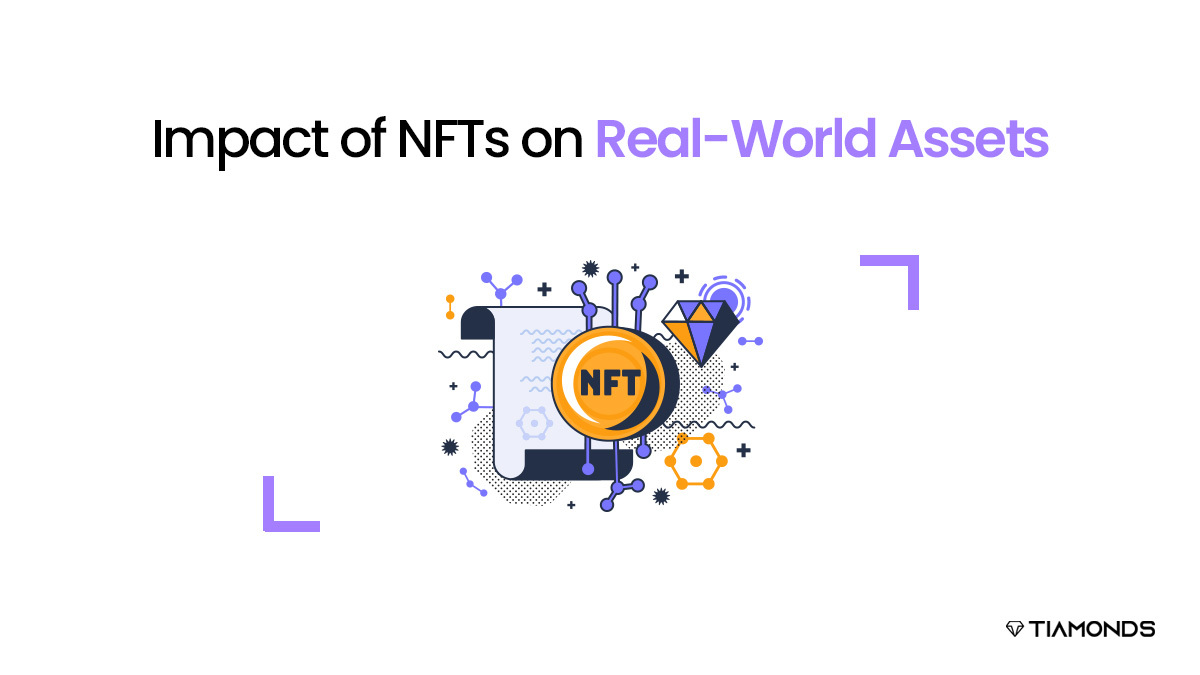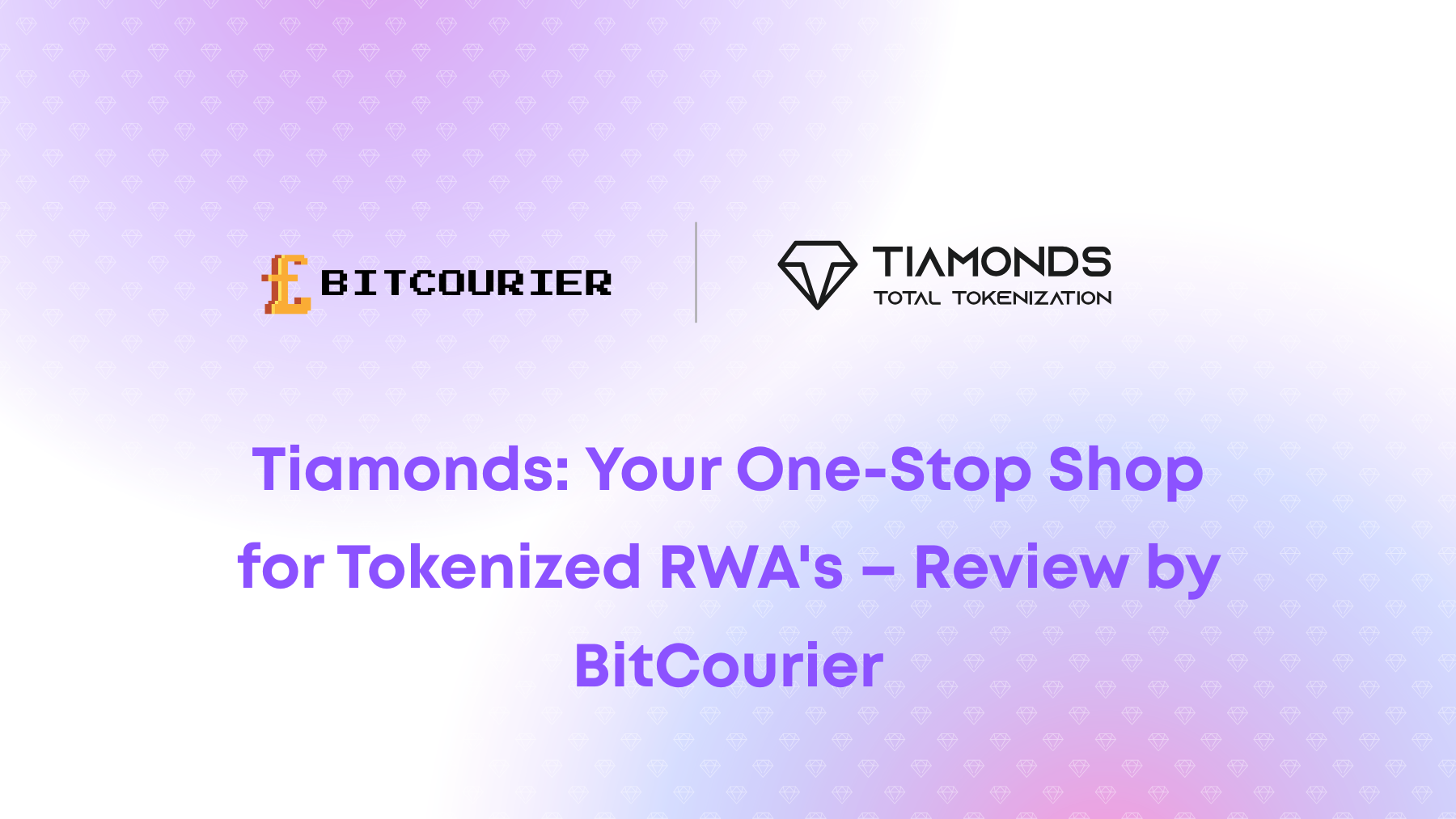Considering the capacity to employ them in a variety of ways as actual assets, the prospective value of NFTs exceeds their current application. One method involves “tokenizing” digital representations of tangible assets, such as real estate. Buyers can purchase, sell, and trade these digital versions, just like other NFTs. They provide a counterfeit-proof mechanism by which individuals can own and trade a physical asset without physically possessing it. Using smart contracts, programs that automatically carry out the provisions of a legally binding agreement when certain requirements are met,NFTs are also starting to be incorporated into real-world assets. Smart contracts can facilitate the purchase and sale of physical assets.
Table of Contents:
ToggleNFTs and Real Estate (Real-World Assets)
A smart contract can easily transfer ownership of land when someone sells it. Using NFTs to symbolise real estate requires a dynamic token, as opposed to the immutable tokens that have been used to represent digital art. Semi-fungible or dynamic tokens are a component of the technology that enables the modification of real estate-related metadata. NFTs can be utilised in a variety of ways to securitize real estate, including:
The process of tokenization: NFTs are capable of representing the rights to a particular piece of physical property, enabling partial ownership, improved capital formation, and, as a result, participation by previously excluded investors.
Smart contracts automate business: NFTs automate the buying and selling procedure when employed in combination with smart contracts. These contracts can automatically transfer control over a non-financial asset (NFA), such as a piece of real estate, upon its sale.
Token-based REIFs and REITs: These kinds of securities can be used to tokenize real estate investment funds like real estate investment funds (REIFs) and real estate investment trusts (REITs).
The impact of NFTs on Trade Financing
When it comes to trade financing, NFTs can be utilised to increase the process’s efficiency and security. An NFT may, for instance, represent a particular shipment of products. This use case facilitates the monitoring and authentication of an item throughout the supply chain.
Embedding important trade finance data, such as certificates of credit and invoice information, into the token creates a permanent record of the trade. This creates a permanent record of the trade. It serves as evidence that is readily accessible and verifiable by all parties involved. In turn, this facilitates the streamlining of the trade process, thereby reducing fraud and enhancing the integrity of finance for trade transactions.
Donation Monitoring
Donation tracking via a distinctive NFT is an additional application for NFTs. A blockchain, a distributed digital ledger, records the tokens enabling secure and transparent transaction monitoring. If the token is stored on the ledger, it can associate the NFT with pertinent details regarding a donation, such as the quantity and recipient. Permanent and immutable records permit the safe and open monitoring of transactions.
The outcome is a previously unattainable level of donation transparency and accountability, making it simpler for organisations to keep tabs on and share information about their fundraising efforts. NFTs could monitor the provenance, ownership, and authenticity of donated physical assets in this use case.
NFTs and Brand Loyalty Programs
Customers are rewarded for their loyalty to and interaction with a brand through brand loyalty programmes. There are a number of ways in which NFTs are advantageous in this context:
Customised rewards: Brands can construct NFTs that document a consumer’s buying history, social media activity, and other brand-specific milestones. Then, these NFTs may be used to recognise and reward loyal consumers. These NFTs increase versatility by allowing transfer or exchange for other rewards.
Unique experiences: NFTs allow businesses to deliver unique online experiences that are only accessible to consumers with a certain number of reward points. Brands can offer consumers a valuable and distinctive reward for their engagement by selling these experiences as NFTs.
Brand-exclusive tokens: NFTs allow customers of a given brand to trade in their points of loyalty for products or services within the ecosystem of that brand.
The financial services industry is employing NFTs to promote real-world assets and use cases in numerous other ways.
Positive effects of NFTs on Tangible Assets
When utilized to represent actual assets, NFTs provide a number of advantages:
Fractional Ownership of Real-World Assets
NFTs are capable of being utilized to depict real-world assets ownership. When fractionalized, this is potent because it can open billions of dollars’ worth of liquidity, thereby transforming illiquid real-world assets such as real estate into liquid ones. Furthermore, fractional ownership functions as a great leveller, as investors of all sizes, from the most modest to the largest, are now able to access markets that were previously out of reach.
Authenticity and the Origin of Real-World Assets
NFTs generate an immutable digital record of the authenticity and provenance of an asset. This makes it easier to sell or trade an asset while establishing its background, significance, and legitimacy.
Availability of information
Encoding vital information about a real-world assets, such as its ownership history and other characteristics, directly within an NFT provides transparency and simple access to information for all parties involved in a transaction.
Transparency
Tokens are protected from tampering and fraud as a result of NFT storage on a decentralized blockchain network. This facilitates the storage and transmission of physical asset ownership.
Integrating Capabilities for Smart Contracts with NFTs
NFTs lend usefulness and interaction to these exceptional digital assets. Smart contracts execute provisions encoded in computer code automatically. When paired with NFTs, they can facilitate elements such as ownership management, the distribution of royalties, and interactive behaviours. Integrating smart contract capabilities with NFTs involves:
- NFTs signify one-of-a-kind digital possessions or assets on a blockchain. These may include artwork, mementos, and virtual real estate, among other things. To integrate smart contract functionality, one must first construct NFTs on a blockchain that supports smart contracts.
- Develop smart contracts to regulate the behaviour and relationships of NFTs. Developers can use languages like Solidity (for Ethereum) and Cadence (for Flow) to create smart contracts. These contracts will define a variety of functionalities concerning possession, royalty payments, and participation.
- The smart contract can govern who controls NFTs by connecting token identifiers with particular wallet addresses. This guarantees that only the NFT’s legitimate proprietor is able to transfer or engage in it
Conclusion
The transformative potential of NFTs extends beyond their current use cases. Tokenizing real-world assets unlocks fractional ownership and liquidity through automated and secure smart contracts. Through the blockchain’s immutable record, NFTs ensure reliability, provenance, and transparency. Integrating smart contracts grants NFTs dynamic capabilities such as ownership control and royalties. This synergy paves the way for a financial landscape that has become more effective, secure, and accessible. NFTs are innovation catalysts, democratising investment and transforming industries. The development of these economies promises a global economy that is more interconnected and accessible.




